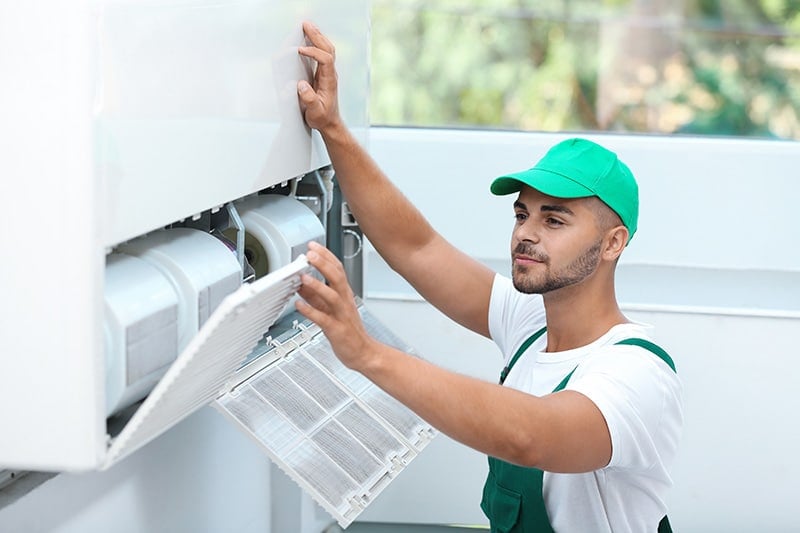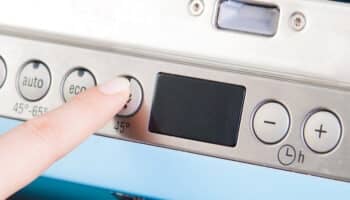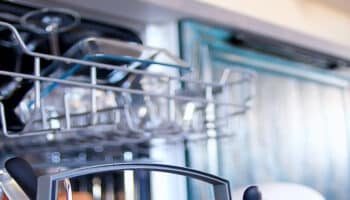Are you stuck trying to figure out why your dishwasher won’t drain?
You’re not alone! I understand how annoying it can be to open your dishwasher only to find standing water and dirty dishes.
But don’t worry. You’ve come to the right place to fix the issue.
If your dishwasher is not draining, you’ll need to run the garbage disposal, clean the filter, and inspect the drain hose. If the issue persists, it’s important to use the right detergent, clean the sink’s air gap, and examine the drain pump.
Read on to fix your non-draining dishwasher!
Dishwasher Won’t Drain? Try These 6 Simple Fixes
In this section, I’ll walk you through the different reasons that can explain why your dishwasher isn’t draining and provide various solutions.
Keep in mind that you’ll need to access certain internal components, such as the filter and drain pump, to fix the drainage issue. So, it’s crucial to have the manufacturer’s manual handy.
Can’t find your manual? No problem! Click the link below to find it!
#1 Run the Garbage Disposal
When fixing a dishwasher that won’t drain, my usual advice is to run the garbage disposal.
You’re probably wondering, “What does the garbage have to do with my dishwasher?” Well, in most kitchen setups, the dishwasher and garbage disposal share the same drain line under the kitchen sink.
So, if the garbage disposal is clogged, your dishwasher won’t be able to drain properly, resulting in standing water.
To fix the issue, simply turn on your garbage disposal while running hot water down the drain. Then, run another dishwasher cycle.
Note: You should never pour boiling water directly into the garbage disposal, as it could damage your drainage pipes.
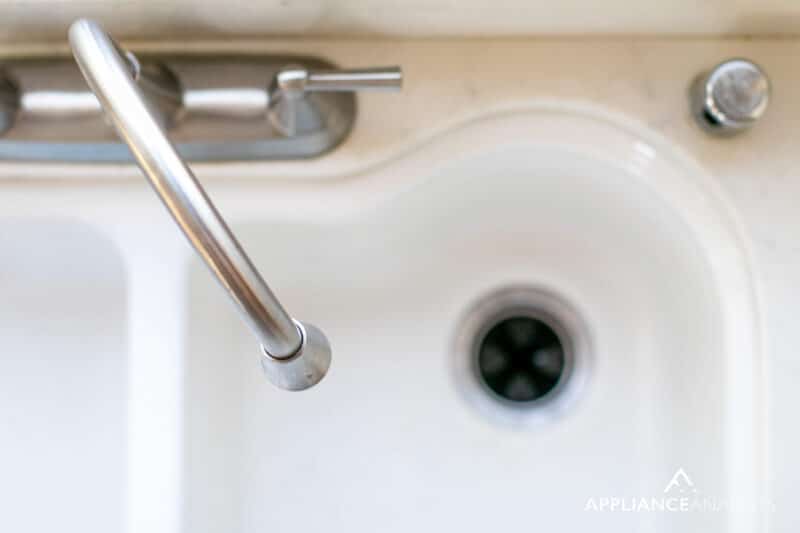
If you’ve recently installed a new garbage disposal, please make sure you’ve removed the knockout plug, which is a small plastic piece that blocks the hole where the dishwasher hose connects.
The knockout plug prevents water from flowing through the drain line. By removing the plug, you’ll open the connection between your dishwasher and garbage disposal, preventing drainage issues.
#2 Clean the Filter
In my experience, a clogged dishwasher filter can also cause drainage issues.
You see, the filter is responsible for trapping food particles, soap residue, and other debris to prevent them from clogging the drainage system and circulating back onto the dishes.
Unfortunately, if the filter is very dirty, it can obstruct water flow and cause different issues, such as unpleasant odors.
But don’t worry! Cleaning the filter is very simple. You’ll just need to:
- Access the cylindrical filter, which is typically at the bottom of the dishwasher. If necessary, remove the bottom rack.
- Turn the filter counterclockwise to pull it out. Please keep in mind that the specific method for removing the filter will vary depending on your dishwasher’s model, so please read the owner’s manual.
- Use soapy water or vinegar and a wire brush to scrub the filter. It’s also important to clean the area where the filter sits.
- Rinse the filter with warm water.
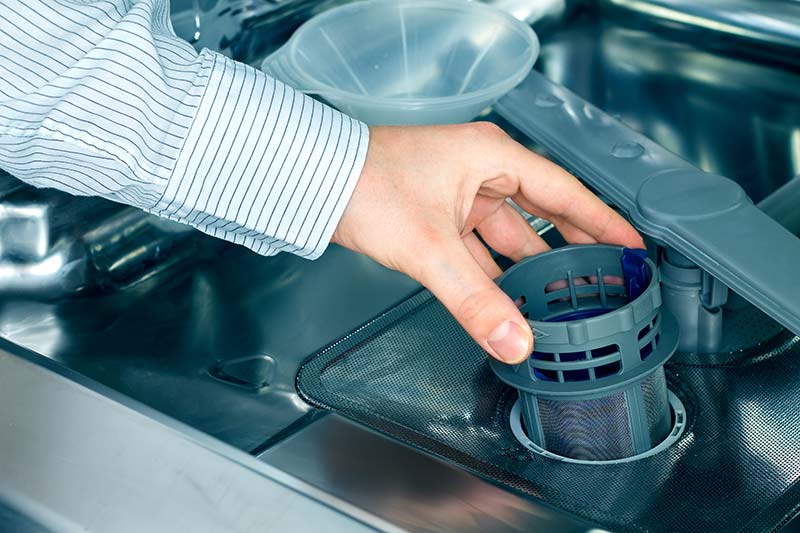
Once you’ve cleaned the filter, please select a cycle. If your dishwasher is still not draining water, chances are there’s an issue with a different component. Read on to learn more.
#3 Use the Right Detergent
When fixing a non-draining dishwasher, it’s also important to check the detergent used.
While dish soap and regular detergents can be more affordable, they are not intended for dishwashers, as they can create excessive suds or not dissolve completely, leading to blockages in the drainage system.
Too much detergent can also leave behind residue that can contribute to clogs in the drainage system. Therefore, it’s crucial to make sure you’re using the right type and amount of detergent by reading the dishwasher’s manual and the product’s instructions.
#4 Inspect the Drain Hose
If you’re struggling with a non-draining dishwasher, I recommend inspecting the drain hose.
The drain hose is responsible for carrying the dirty water from the dishwasher to the drainage system. Unfortunately, if the drain hose is clogged with food particles or other debris, it can prevent water from flowing properly.
To clean the drain hose, please unplug your dishwasher and turn off the water supply. Then, place a bucket under the hose and disconnect it using some pliers. Pour warm water into the drain hose to remove any loose debris. You can also run a snake or an old cable line down the drain hose.
While you’re cleaning the drain hose, please inspect it. Look for any visible signs of wear or damage, such as cracks or kinks. If necessary, get a compatible replacement to fix the drainage issue.
When installing the drain hose, it’s crucial to make sure it runs smoothly without any kinks that could restrict the water flow. Additionally, don’t forget to consult the manufacturer’s manual for guidance on creating a high loop and using the correct hose length.
#5 Clean the Sink’s Air Gap
If your dishwasher is still not draining, it’s time for us to check the sink’s air gap.
The air gap is a small device that sits on top of the kitchen sink. It is responsible for preventing dirty water in the sink or garbage disposal from flowing back into your dishwasher.
Note: Not all kitchen setups have an air gap.
Unfortunately, debris can obstruct the air gap and cause drainage issues. To clean the air gap, simply remove its cover and use a small brush, toothpick, small snake, or tweezers. While you’re at it, please make sure it’s tightly secured.
#6 Examine the Drain Pump
If you’ve tried all the fixes mentioned in this article, but your dishwasher is still not draining, then there’s probably an issue with the drain pump.
You can think of the drain pump as the heart of your dishwasher’s drainage system. It activates at the end of each was cycle and forces the dirty water from your dishwasher through the drain hose and into the plumbing system.
As you can imagine, a clogged or malfunctioning drain pump won’t effectively remove the wastewater.
Follow these simple instructions to examine your dishwasher’s drain pump:
- Unplug your dishwasher or turn it off at the circuit breaker to prevent electrical hazards.
- Access the drain pump, which is typically located at the bottom of the dishwasher.
- Remove any foreign objects, such as food, broken glass, or other debris. To ensure your safety, please wear thick gloves.
- Check the impeller mechanism. If it’s damaged, replace the drain pump.
- However, if the drain pump is not clogged or doesn’t seem damaged, then you’ll need to test the motor with a multimeter. If it doesn’t show continuity, replace the pump.
If you’re uncomfortable testing or replacing your dishwasher’s drain pump, it’s best to call a professional. They have the required tools and expertise to diagnose and fix the issue.
Fixing Your Dishwasher’s Drainage Issues
Hopefully, now you know how to fix your non-draining dishwasher.
Remember that if your dishwasher is not draining, you’ll need to clean the filter at the bottom of the unit, run the garbage disposal, and make sure you’re using the right detergent. Don’t forget that it’s also important to inspect the drain hose, air gap, and pump.
Thank you so much for reading this quick guide. If you’ve found it helpful, please check out our other related posts below.
Have a great day!



